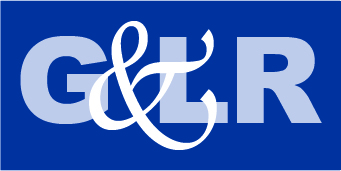The first Pride flag display students and the author planted at the heart of campus, consisting of over 100 flags marking the college’s first celebration of LGBTQ+ History Month
When I first came out to my best friend in high school, following a sarcastic “No shit,” he stated that he would defend me against violence, but that he did not care for gay people in general, though he was okay with me. This response first filled, then fractured, my teenage heart. This was early in my quest down the yellow brick road, but somehow I knew to ask: “How many gay people do you actually know?”
“Well … none, I guess.”
Exactly. If we only know stereotypes and the vague abstractions demonized by myopic ideologies, then of course it is easier to isolate and exclude individuals who challenge essentialist, reductive worldviews. And so, it is my duty to represent LGBT communities for those who believe they have never encountered such people.
I teach English literature and writing at a Midwestern college for men. Injustice and violence against LGBT communities are standard features of patriarchal institutions more broadly, so this college for men presents a unique opportunity for social justice. For many students, including those I have never met, I am “that queer professor.” It’s hard to ignore my presence on such a small campus: my office door looks like a Pride parade float.
My queer visibility projects a beacon for some of the most vulnerable students. College is often one’s first time away from home and the trappings of heteronormativity. There’s more freedom to explore the contradictions between people’s outward-facing personas and their true selves. Some recognize that something is different about them. They need a listener with whom they can begin to speak their true selves into being. Emerging from the closet is a radical and overwhelming process. I am the supportive witness who connects them to LGBT cultures and who directs them to mental health professionals, gender affirming organizations, and resources for safe sex practices.
I also build bridges with straight, cisgender young citizens. One student asked during a discussion about queer theory: “So what’s the point? Is it just that we’re supposed to be nice to gay people?” The question was not posed with a combative tone; it was a genuine attempt to reconcile the theory with practical applications. I responded: “Well, that’s part of it. Everyone in this room is connected to someone who is LGBT. They are our friends and family. If you know it’s not you personally, and you can’t immediately identify one or two people, then ask yourself why. It’s not because they don’t exist. It’s more likely that they don’t feel safe. And we tell them they’re not safe around us through insensitive and uncritical behavior such as using the word ‘gay’ as a synonym for ‘undesirable.’ But queer theory does so much more than this. It’s a source of freedom for all of us. If queer theory, much like feminism, exposes apparatuses of oppression, as well as the social construction of identity categories, it stands to liberate more than just LGBT individuals. Consider this: here we are at this school for men, but what is a man? What are the character traits that define masculinity? Is it just a penis? Is it a lack of emotion? A stoic, invulnerable façade with limited social connections? Every idea about masculinity is undermined by alternative individuals. And so, I would argue that queer theory offers freedom from these overly restrictive identity categories, including cisgender straight men who moderate their behaviors in order to maintain a masculine persona. It’s about mental health and relationships. It’s about resisting social coercion, and being your authentic self.”
The room fell silent. I paused for questions, then proceeded with the lesson. But later that evening, I received four e-mails from students asking about alternative masculinities, bonds between men, and vulnerability. Each e-mail expressed gratitude.
One of these e-mails offered support against backlash. This student had never encountered LGBT cultures before. He knew about gay-bashing, but he did not know any gay people. Suddenly he had an openly queer professor. The ideology and the individual are two different things. Despite the power disparity of the teacher-student relationship, this student was concerned for my safety. In his message I could hear the voice of my old high school friend. He wanted to protect someone he knew.
 Elan Justice Pavlinich is a Byron K. Trippet Assistant Professor of English at Wabash College. His research interests include queer and feminist approaches to medieval texts and medievalisms, broadly defined as postmedieval representations of the Middle Ages.
Elan Justice Pavlinich is a Byron K. Trippet Assistant Professor of English at Wabash College. His research interests include queer and feminist approaches to medieval texts and medievalisms, broadly defined as postmedieval representations of the Middle Ages.







Discussion4 Comments
I’m thankful for your presence at Wabash and your generosity and willingness to share your thoughts. Your presence and line of questioning can open up space not just for lgbtq students and staff, but for those who don’t want to constrained to stereotypes of masculinity.
Gary, thank you for your kind words. I am grateful we are part of the same communities.
Thank you for this sentence: “Every idea about masculinity is undermined by alternative individuals.” This is why Jonathan Ned Katz named his book about homosexuality: “The Invention of Heterosexuality.”
I just ordered a copy, Jeff. Thanks for the reading recommendation!